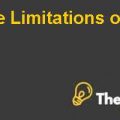
INTRODUCTION
1.1 Background of the Study
Since its introduction Activity-based costing (ABC) has been quite an underutilized concept in most of the emerging and developing countries despite the tremendous success of the refined costing system that has actually provided effective information for the cost management. It is basically an accounting method, which has allowed all businesses to gather data about their particular operating costs. Under this system, costs are basically applied or assigned to specific activities such as manufacturing, engineering and planning where the activities are associated with various kinds of services and products. Basically, ABC method enables a business to make decisions on all the different products and services along with the resources that are the driving force towards the profitability and the factors or elements that contribute towards losses. Therefore, ABC helps in generating data that creates a better budget and gains a greater overall understanding of the various expenses that are required to keep the company running in a smooth manner. Generally, Activity-based costing is the most effective mode when used over a long period of time (Kaplan, 2007).
Activity-based costing has emerged and gained competitive edge through the period of 1980s as a mean, which basically measures all of the business costs quite accurately and then associate them to goods and services that are produced. Prior to this method of costing, traditional costing accounting methods have been designed for different companies that are operating since the early 20th century. This was the time when direct materials and labors were the two main largest costs that were associated with the production of different services and goods. This was the time when little automation at the end time and overhead costs were quite small as a percentage of the overall total costs. Moreover, many companies have offered a very small and narrow range of products and services. All this has changed in the middle of the century. Automation has been incorporated into all the different overhead costs and businesses that rose with the support of the services that are needed to design and manage the automation, which were removed for the production. For a long period of time, traditional costing accounting standards or methods have also stayed in the place. Companies have continued to measure the primary costs of materials and direct labor that have allocated the overhead costs that are to some extent arbitrarily. Over the period of time, overhead costs have grown as the share of total costs where distortions have grown considerably (Garrison, 1999).
With changing business conditions and business model, Robert S. Kaplan who is a professor from Harvard Business School came up with the idea or the need to develop a more sophisticated and comprehensive business model to allocate cost that can directly be linked to the services and goods produced by the business. The costing system which is called the Activity-based costing is basically based on the fundamental that the majority of business activities are supported in the production of goods and services. To get the true and complete picture of the cost of producing services or goods, one must allocate different cost of business activities to specific services and products. The Activity-based costing method does this by assigning corporate and factory overhead as well as all the other indirect resource costs (Kaplan, 2007).
1.2 Statement of the Problem
There are significant and various problems with the implementation of ABC process and this study will help in investigating the actual problem that will help in implementing the ABC system. This research will evaluate the importance of the application of ABC among companies and what features can be gained by implementing such a developed system. This study will also discuss the differences between the ABC costing system and the traditional system and it will identify the main issues related to the traditional system and its application (Joshi, 2001).
1.3 Review of Research Literature
Companies all around the world have been using the Activity-based costing. Along with this, it is considered as one of the most important innovations in recent times in cost calculations and the managerial accounting. ABC has developed an approach to address various problems that have been associated with the traditional cost management systems, which lean to have the inability and inaccessibility to firmly determine actual production and service costs and provide the useful information for the various operating decisions (Messner, 2009). The above deficiencies that the managers have been exposed to the decision making based on the inaccurate data results in higher exposure for different companies with multiple products and services. The new system of costing that is the Activity-based costing over a short period of time has evolved as the highest level of interest for the professionals in the industry and the academic practitioners since 1980s (Garrison, 1999).....................
This is just a sample partial case solution. Please place the order on the website to order your own originally done case solution.













